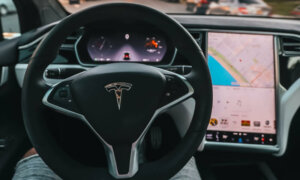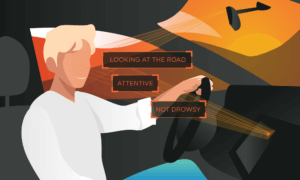The increasing number of car accidents as well as an undeniable interest in autonomous vehicles has made technology companies as well as car manufacturers put everything they have in DMS. Knowledge, passion, time and resources are spent everyday on making driving safer and paving the way for truly self-driven cars. So far, algorithms are used to scan the outside of the vehicle and monitor the driver’s seat, but a new sensor system has been developed to keep an eye on what’s happening inside #automagic
All around monitoring can seem excessive for pedestrians, but drivers know that they need six pairs of eyes, not two when they’re behind the wheel. The ideal setting could be a union of outside monitoring system and DMS with indoor sensors that capture what happens on the right seat but especially the backseat.
The Intelligent Car Interior project is working on this, using depth-perception cameras. These should record information from the car’s interior, telling the driver what his children are doing on the backseat, for example. Plus, it could help autonomous cars in the future by estimating how long will it take until driver resumes control of the vehicle.
By identifying the number of people, their size and posture, the system can be taught to recognize what they ‘re holding: “One challenge is to reliably identify the objects people are using. If one considers that in principle, any object could find its way into the vehicle, we must somehow limit the number of detectable possibilities. We therefore set basic parameters and tell the computer where the sun visor and glove compartment are, for example”, explains Dr. Michael Voit, group manager at Fraunhofer IOSB. This data could help make adjustments to passenger seats in the future.
Now, the technology is being tested in a Volkswagen Multivan. Even if it proves a success, we’ll have to wait a while before it’s featured in cars since low power consumption, low latency and high performance are prerequisites for today’s top-notch automotive technologies. Only a few companies can say their solutions are truly market-ready.
Follow TechTheLead on Google News to get the news first.























